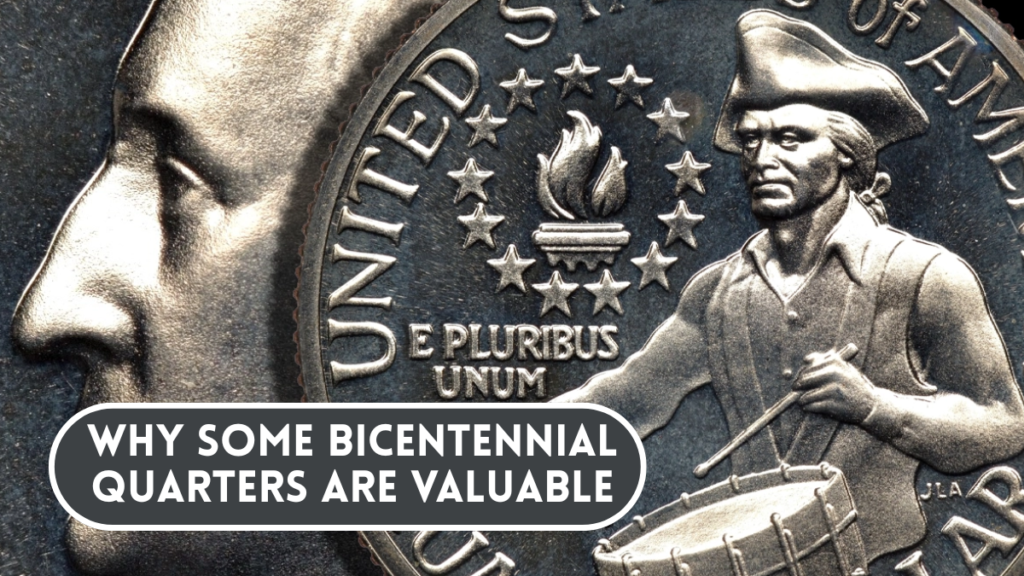What are Bicentennial Quarters?
The Bicentennial quarters had been minted in honor of the 200th anniversary of American independence, in 1975 and 1976, presenting an uncommon opposite design with a colonial drummer and a victory flame bordered with the aid of 13 stars, representing the authentic colonists.
Instead of giving the date as either 1975 or 1976, the Bicentennial Quarter carries the date “1776-1976.” More than 1.6 billion quarters had been minted in Philadelphia, Denver, and San Francisco, thereby making them quite simply to be had. Among the billions, however, a few stick out.
Why Some Bicentennial Quarters are Valuable

Not all Bicentennial Quarters are really worth more than their face price. However, positive kinds are exceedingly unusual as a result of minting faults, restrained releases, or great circumstance. Here’s an outline of the maximum vital kinds:
- Double Die Obverse (DDO)
- What to search for: Doubling on the inscriptions, particularly “LIBERTY” and “IN GOD WE TRUST.”
- Estimated value: Up to $7,000 in true nice.
- For instance, a PCGS-graded MS66 DDO zone was bought at auction for $6,462 (Heritage Auctions).
- No “S” proof sector
- What to Look for: A proof coin without a mint mark (generally an “S” for San Francisco).
- The estimated value is between $4,000 and $15,000.
- Silver Composition Error Coins
- What to Look For: Off-steel moves or planchets the usage of 40% silver as opposed to copper-nickel.
- Estimated Value: Ranges from $200 to $5,000
- Fun Fact: San Francisco issued a constrained number of silver Bicentennial quarters as a part of unique sets.
- Planchet errors
- Strikes on planchets designed for different denominations (e.g., dime or foreign currency)
- Estimated value: $500 to $3,000, depending on the fault kind.
- Authentication tip: These coins may seem off-size or lighter than ordinary quarters.
- High-grade mint state (MS67 or above)
- Look for coins with a pristine shine, no scratches or put-ons, and properly struck capabilities.
- Estimated price: $4,000 or more, depending on grade and call for.
- Reality Check: A small, wide variety of coins graded by means of PCGS or NGC gain this level.
How to Identify a Rare Bicentennial Quarter

Here’s a step-by-step checklist for determining whether your zone is valuable:
The data need to be examined. All actual Bicentennial quarters have the date “1776-1976” engraved on them.
The mint mark desires to be checked. A “D,” “S,” or no mint mark (for Philadelphia) must be searched for under the phrases “IN GOD WE TRUST” at the obverse of the coin.
- Examine the writing and numerals for evidence of doubling with a magnifying glass.
- Coins in mint condition (uncirculated) are more valuable. Look for the original shine and a lack of wear.
- Consider professional grading. If your coin seems rare or faultless, send it to the PCGS or NGC for verification and authentication.
Where To Sell Or Authenticate Your Quarter
If you sense you maintain a priceless Bicentennial area, here’s what you may do:
- Get It Graded: Send your coin to PCGS or NGC for authentication and grading.
- Use Auction Houses: Sell on websites like Heritage Auctions or Great Collections.
- Consult Coin Dealers: Visit a reputable coin provider for an in-person appraisal.
- Avoid Online Scams: Be skeptical of unverified tests or “coins-for-coins” scams that seem online.
FAQs
Why do Bicentennial quarters show the date 1776-1976?
All Bicentennial quarters feature “1776-1976” to mark the U.S. Bicentennial, regardless of being minted in 1975 or 1976.
Are all Bicentennial quarters valuable?
No, most are common. Only rare varieties or high-grade examples hold significant value beyond their 25-cent face amount.
What is a Double Die Obverse (DDO) Bicentennial quarter?
This error shows doubled letters like “LIBERTY” and “IN GOD WE TRUST,” and can be worth thousands if authenticated.
